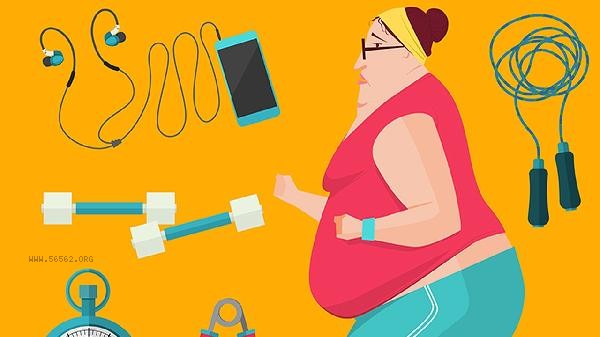Female abdominal obesity below the navel can be reduced through targeted methods such as adjusting dietary structure, strengthening core training, and improving lifestyle habits. The main influencing factors include visceral fat accumulation, pelvic anterior tilt posture problems, hormone level changes, prolonged sitting and lack of exercise, postpartum rectus abdominis muscle separation, etc.

1. Dietary structure adjustment
Reduce refined carbohydrates intake and replace white rice noodles with whole grains such as brown rice and oats.
2. Core muscle group training
Plate support can activate the deep transverse abdominis muscle, starting at 30 seconds per group for 3 groups per day. When lying on your back and lifting your legs, keep your waist pressed against the ground and feel the force exerted on your lower abdomen. Avoid traditional sit ups to avoid exacerbating lumbar pressure.
3. Body posture correction intervention
Pelvic anterior tilt can exacerbate lower abdominal protrusion, which can be adjusted through wall standing training. Place your feet 30 centimeters away from the wall, tighten your hips to ensure that your lumbar spine is fully aligned with the wall, and practice for 10 minutes every day. Seek guidance from a rehabilitation therapist when necessary.

4. Hormone level management
The advantage of estrogen may promote fat accumulation in the lower abdomen, and it is recommended to do 150 minutes of moderate intensity aerobic exercise per week. Ensure 7 hours of deep sleep and reduce the secretion of stress hormone cortisol.
5. Postpartum rehabilitation measures
Professional evaluation is required for rectus abdominis muscle separation after delivery. Restore muscle function through abdominal breathing training and avoid premature abdominal exercises. The use of abdominal bands should be worn within a limited time under the guidance of a doctor.

It is recommended to drink 2000 milliliters of water per day and choose vegetables rich in dietary fiber such as broccoli and spinach. The combination of aerobic exercise and strength training has a better effect, such as brisk walking combined with kettlebell swinging. Avoid wearing overly tight clothing that affects blood circulation, and adjust exercise intensity appropriately during the menstrual cycle. If the waist circumference continues to exceed the standard and menstrual disorders occur, it is necessary to screen for endocrine diseases such as polycystic ovary syndrome.








Comments (0)
Leave a Comment
No comments yet
Be the first to share your thoughts!